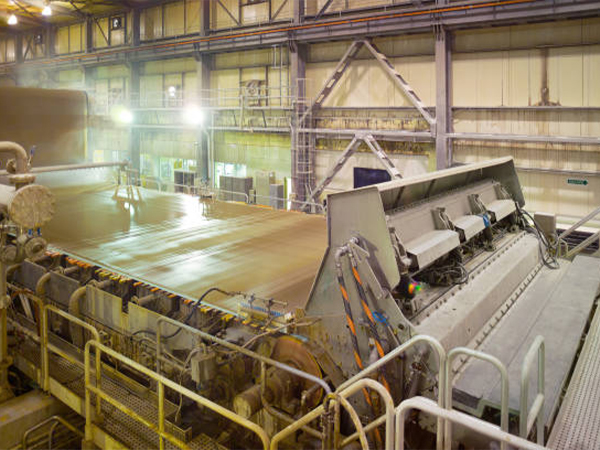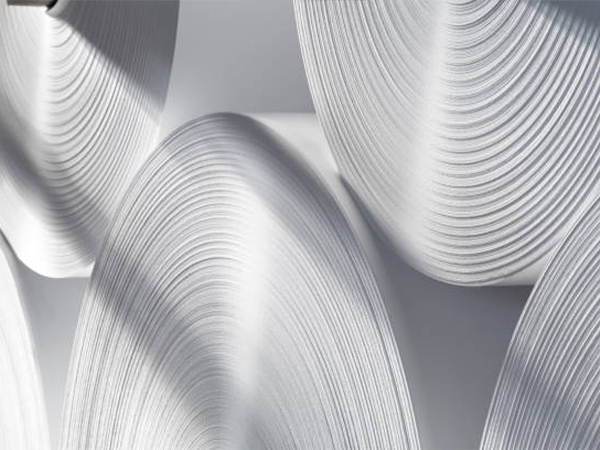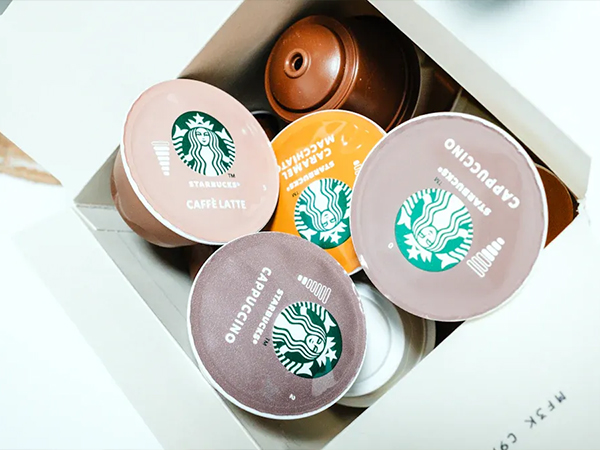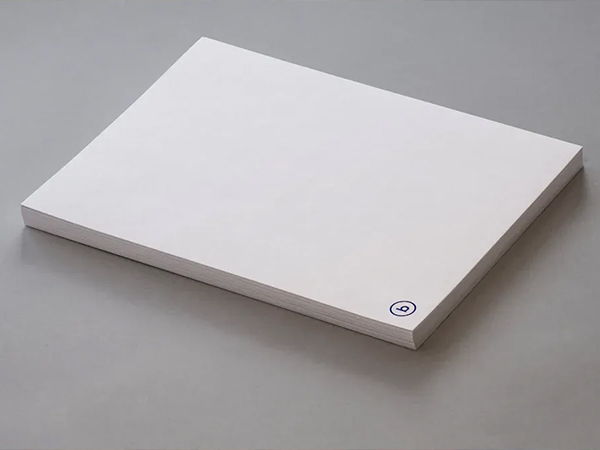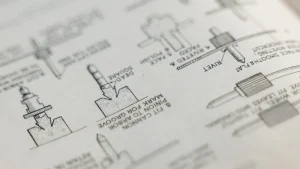
Polyacrylamide Enhances your papermaking process by acting as a flocculant, retention aid, dispersant, and drainage aid. You see practical improvements in filler retention and paper strength when you use cationic polyacrylamide (cPAM):
- cPAM boosts calcium carbonate retention in paper sheets, delivering the best results among additives.
- Combining cPAM with bentonite pushes retention yields of calcium carbonate above 90%, especially with in-situ nanoparticles.
You achieve stronger paper because polyacrylamide increases fiber bonding, leading to higher tensile, burst, and tear resistance. This optimized retention also reduces material loss, giving you more uniform and durable sheets.
Key Takeaways
- Polyacrylamide acts as a flocculant, improving filler retention and reducing waste in paper production.
- Using cationic polyacrylamide (cPAM) can boost paper strength by enhancing fiber bonding, leading to higher tensile and burst resistance.
- Incorporating polyacrylamide accelerates drainage, increasing production speed and efficiency while lowering costs.
- Selecting the right type of polyacrylamide based on your process needs ensures optimal results and consistent paper quality.
- Proper dosing of polyacrylamide is crucial; avoid overdosing or underdosing to maintain efficiency and prevent defects.
How Polyacrylamide Enhances
Flocculation and Bridging
You rely on polyacrylamide to create strong bonds between fibers and fillers in your papermaking process. Polyacrylamide Enhances retention by acting as a flocculant and bridging agent. Its long polymer chains attach to fine particles, neutralizing their surface charge and connecting multiple particles together. This action forms larger flocs, which you can easily retain in the paper sheet. You see improved retention and dewatering because these flocs settle quickly and efficiently.
Tip: Larger flocs mean less material loss and more uniform paper sheets.
You can select different types of polyacrylamide based on your process needs. The table below shows how each type works:
| Type of Polyacrylamide | Mechanism/Role in Papermaking |
|---|---|
| Anionic Polyacrylamide (APAM) | Flocculates negatively charged particles, boosts retention of fillers and fines, improves dewatering in neutral to alkaline conditions. |
| Cationic Polyacrylamide (CPAM) | Adsorbs onto negatively charged fibers, increases retention, enhances dewatering, prevents fiber agglomeration in neutral to acidic conditions. |
| Non-ionic Polyacrylamide (NPAM) | Uses bridging mechanisms for flocculation and stabilizes dispersions, ideal for charge-neutral applications. |
Polyacrylamide Enhances the formation of flocs, which leads to higher filler retention and stronger paper. You gain better control over the papermaking process and achieve consistent results.
Fiber and Filler Interaction
You notice that polyacrylamide does more than just flocculate particles. It also improves the interaction between fibers and fillers. Polyacrylamide Enhances adsorption onto fibers, ensuring that small fibers and fillers stay within the paper sheet. This mechanism increases retention and reduces waste.
The following table highlights how polyacrylamide’s features and functions benefit your papermaking operation:
| Feature of Polyacrylamide | Benefit |
|---|---|
| Charge Density | Improves paper strength by optimizing fiber bonding. |
| Molecular Weight | Influences how well polyacrylamide interacts with fibers. |
| Ionic Monomer Type | Determines effectiveness in different papermaking conditions. |
| Function of Polyacrylamide | Description |
|---|---|
| Retention Agent | Improves quality of paper and reduces raw material consumption. |
| Dispersant | Prevents fiber agglomeration, resulting in more uniform paper. |
| Drainage Aid | Enhances drainage rate, improving dewatering efficiency. |
| Flocculant | Forms large flocs for easier removal from pulp. |
You benefit from charge neutralization, which reduces the surface charge of fibers. This process improves dewatering and overall retention. The table below summarizes these mechanisms:
| Mechanism | Description |
|---|---|
| Adsorption | Polyacrylamide molecules adsorb small fibers and fillers, ensuring their retention in the sheet. |
| Charge Neutralization | Reduces fiber surface charge, boosting dewatering and retention efficiency. |
Polyacrylamide Enhances the interaction between fibers and fillers, which leads to stronger, more durable paper. You also reduce raw material loss and improve the uniformity of your product.
Note: When you integrate polyacrylamide, you may face challenges such as compatibility with recycled fibers, regulatory scrutiny, and effective wastewater management. You should evaluate these factors to optimize your process.
Filler Retention
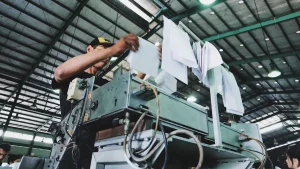
Improved Rates
You see a dramatic improvement in filler retention when you use polyacrylamide in your papermaking process. Polyacrylamide Enhances the ability of your system to keep fillers like precipitated calcium carbonate (PCC) and ground calcium carbonate (GCC) within the paper sheet. Before adding polyacrylamide, retention rates for these fillers often range from 40% to 50%. After application, you can achieve retention rates as high as 80% to 90%. This improvement means you use your raw materials more efficiently and produce higher-quality paper.
| Filler Type | Retention Rate Before (%) | Retention Rate After (%) | Reference |
|---|---|---|---|
| PCC | 45 | 80 | Lourenço, Gamelas, et al., 2019 |
| PCC/GCC | 40-50 | 80-90 | Ämmälä et al., 2013; Lourenço et al., 2017; Lourenço, Godinho, et al., 2019; Song et al., 2022 |
When you achieve higher retention rates, you reduce the need for additional filler, which lowers your production costs and improves sheet consistency.
Reduced Loss
You also benefit from a significant reduction in the loss of fine fibers and fillers. Polyacrylamide works through several mechanisms to keep valuable materials in your product:
| Mechanism | Description |
|---|---|
| Aggregation of particles | Polyacrylamide aggregates fine particles, enhancing their retention in the papermaking process. |
| Charge neutralization | Polyacrylamide neutralizes charges, allowing fine fibers and fillers to bond together more effectively. |
| Bridging | Polyacrylamide forms bridges between fibers and fillers, creating larger flocs that are easier to retain. |
- Anionic polyacrylamide forms bridges between fibers and fillers.
- It causes fine particles to agglomerate and attach to larger fibers.
- This process improves the retention of fillers and fine fibers in the final paper.
You notice measurable reductions in material loss throughout your process. For example, you can achieve up to 95% turbidity reduction, 98% reduction in total suspended solids, and 93% reduction in chemical oxygen demand. These improvements help you maintain a cleaner system and reduce environmental impact.
| Measurement Type | Reduction Percentage |
|---|---|
| Turbidity Reduction | 95% |
| Total Suspended Solids | 98% |
| Chemical Oxygen Demand | 93% |
By reducing material loss, you not only save on raw materials but also improve the sustainability of your operation.
Paper Strength
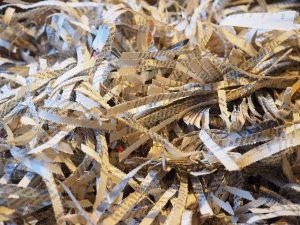
Tensile and Burst
You can achieve remarkable improvements in paper strength when you use polyacrylamide in your process. Polyacrylamide Enhances the tensile and burst properties of your paper by increasing the bonding between fibers. This stronger bonding results in higher resistance to pulling and bursting forces, which is essential for many paper grades.
- The addition of glyoxalated polyacrylamides significantly increases the tensile strength of paper products.
- In one experiment, you can see the dry strength of a 42 gsm paper sheet rise above that of a 45 gsm sheet without additives.
- Another result shows that the strength of a 65/35 based paper matches that of a 60/40 based paper, allowing you to substitute short fibers for long fibers without sacrificing strength.
Polyacrylamide also improves inter-fiber bonding, which leads to greater burst strength and stiffness. You can meet higher strength specifications or reduce the amount of fiber needed in your products. K Series Polyacrylamide increases physical strength by forming additional hydrogen bonds and intermolecular forces. This results in enhanced tensile, burst, and tear strength, giving you more flexibility in your papermaking choices.
Tip: Improved tensile and burst strength means you can produce lighter paper without compromising quality.
Durability and Quality
You benefit from more durable and higher-quality paper when you incorporate polyacrylamide into your process. The improved fiber bonding not only boosts strength but also enhances the overall durability of your sheets. Your paper resists tearing, folding, and mechanical stress better, which is crucial for packaging, printing, and specialty applications.
A stronger, more uniform sheet means fewer defects and less waste during production. You can maintain consistent quality across large production runs, which helps you meet customer expectations and industry standards. Enhanced durability also extends the lifespan of your paper products, making them more reliable for end users.
| Property | Improvement with Polyacrylamide |
|---|---|
| Tensile Strength | Higher |
| Burst Strength | Higher |
| Tear Resistance | Higher |
| Sheet Uniformity | Improved |
When you focus on both strength and quality, you create paper that stands out in the market and delivers lasting value.
Operational Benefits
Efficiency Gains
You gain significant efficiency improvements when you use polyacrylamide in your papermaking process. Polyacrylamide enhances pulp dewatering, which speeds up the removal of water from the pulp. This faster dehydration allows you to increase production speed and reduce downtime. You also benefit from better retention of fillers and fine fibers, which leads to less waste and more consistent paper quality.
Polyacrylamide acts as a dispersant, helping you achieve a uniform distribution of fibers and fillers. This uniformity improves the contact between water and pulp, making the forming and drying stages more efficient. The hydrophilic groups in polyacrylamide reduce surface tension, which further boosts water absorption and retention.
You can see the efficiency gains across different paper types and applications:
| Application Type | Efficiency Gains |
|---|---|
| Writing Paper | Improved surface properties and strength, suitable for various writing instruments. |
| Packaging Paper | Increased strength, tear resistance, and durability for safe transportation. |
| Specialty Paper | Enhanced performance for high-quality products. |
| Cationic Polyacrylamide | Superior bonding and surface properties for high-performance applications. |
| Paper Dry Strength Additive | Optimized raw material use, reduced waste, and improved mechanical properties. |
You also save on costs because polyacrylamide reduces the need for additional stabilizers and surfactants. It helps you use raw materials more efficiently and lowers energy consumption by speeding up the process.
- NPAM promotes the retention of fine fibers and fillers, reducing material loss.
- APAM reduces the need for extra chemicals and speeds up drainage.
- You minimize raw material waste and lower production costs.
- Improved process efficiency means less energy use.
Tip: Faster drainage and better retention mean you can produce more paper with fewer resources.
Environmental Impact
You improve your environmental footprint when you use polyacrylamide. By enhancing pulp dehydration, you reduce water usage and energy consumption. Polyacrylamide also helps settle sewage and reduce suspended solids, which keeps your wastewater cleaner and supports regulatory compliance.
However, you should consider the recyclability of paper products containing polyacrylamide. The chemical structure of polyacrylamide is stable, which can slow down degradation. Industrial polyacrylamide may contain contaminants that require extra treatment during recycling.
| Factor | Description |
|---|---|
| Chemical Structure | High-molecular-weight polymer with stable bonds, which can hinder degradation. |
| Degree of Degradation | Degrades over time, depending on environmental conditions. |
| Contaminants | May contain heavy metals or other substances that complicate recycling. |
You may face technical and regulatory challenges when recycling paper with polyacrylamide. Efficient separation and purification methods are still developing, and the presence of contaminants means you need additional treatment steps.
- Recycling polyacrylamide involves technical and economic challenges.
- You may need extra processes to remove contaminants.
- Efficient recycling methods are still under development.
By using polyacrylamide, you support cleaner production and reduce waste, but you should stay informed about best practices for recycling and environmental management.
Product Selection
Types and Grades
You have several options when selecting polyacrylamide for your papermaking process. Each type offers unique characteristics and benefits. The table below summarizes the main types and their applications:
| Type of Polyacrylamide | Characteristics | Applications in Papermaking |
|---|---|---|
| Anionic Polyacrylamide (APAM) | Negative charge, high molecular weight | Used as a flocculant, enhances sedimentation of suspended solids |
| Cationic Polyacrylamide (CPAM) | Positive charge | Effective for sludge dewatering and as a retention aid |
| Non-ionic Polyacrylamide (NPAM) | No net charge | Used where charge neutrality is needed, balances flocculation and dispersion |
You should consider the molecular weight and charge density of each grade. High molecular weight polyacrylamide works best as a flocculant, while lower molecular weight grades serve as dispersants. Cationic polyacrylamide interacts strongly with cellulose fibers and fillers, improving retention and drainage. Anionic polyacrylamide performs well when combined with cationic coagulants, especially in neutral or alkaline conditions. Non-ionic grades help balance flocculation and dispersion in charge-neutral environments.
Tip: Select the grade that matches your pulp pH, temperature, and machine operating conditions for optimal results.
Application Tips
You can maximize the benefits of polyacrylamide by following best practices during application. Maintain fiber consistency and choose chemicals that prevent deposits and reduce additive costs. Apply the correct dosing technique to avoid tearing and keep your machine running efficiently.
Common mistakes include overdosing, which causes excessive flocculation and sheet defects, and underdosing, which slows drainage and leads to filler loss. Even a 10–15% deviation from the optimal concentration can reduce retention efficiency by up to 25%.
| Mistake | Description |
|---|---|
| Overdosing | Excessive flocculation, sheet defects, increased fines carryover |
| Underdosing | Slower drainage, loss of filler, reduced efficiency |
| Deviation from Optimal | 10–15% deviation can reduce retention efficiency by up to 25% |
You should also review regulatory guidelines if you produce food-grade or specialty paper. Polyacrylamide is classified as GRAS and approved by the FDA for food contact materials, provided you meet safety regulations.
- Polyacrylamide offers superior flocculation and retention compared to alternatives.
- Future trends focus on eco-friendly formulations and innovations that enhance paper strength.
By selecting the right type and applying it correctly, you improve retention, paper strength, and operational efficiency.
Polyacrylamide Enhances your papermaking process by improving filler retention and paper strength through several mechanisms:
- Acts as a flocculant, binding fibers and fillers for higher retention and reduced waste.
- Accelerates drainage, increasing production speed and efficiency.
- Promotes uniform fiber distribution, resulting in smoother, stronger, and more printable sheets.
- Allows you to customize solutions for specific pulp types and production needs.
You gain better yields, lower costs, and consistent quality when you select the right polyacrylamide solution for your operation.
FAQ
What is the best type of polyacrylamide for paper strength?
You should choose cationic polyacrylamide (CPAM) for the best improvement in paper strength. CPAM interacts strongly with cellulose fibers and fillers, which increases bonding and enhances the physical properties of your paper.
How does polyacrylamide reduce production costs?
You use less raw material because polyacrylamide increases filler retention. This efficiency lowers your material costs. Faster drainage also reduces energy use and shortens production time, which saves you money.
Can you use polyacrylamide with recycled fibers?
Yes, you can use polyacrylamide with recycled fibers. You may need to adjust the dosage or type to match the fiber quality. Always test compatibility to achieve the best retention and strength results.
Does polyacrylamide affect paper recyclability?
Polyacrylamide does not prevent recycling, but it can slow down degradation. You may need extra treatment steps to remove contaminants. Always follow best practices for recycling and wastewater management.
What is the main mistake to avoid when dosing polyacrylamide?
Tip: Avoid overdosing. Too much polyacrylamide causes excessive flocculation, which leads to sheet defects and higher fines carryover. Always monitor and adjust the dosage for optimal performance.

